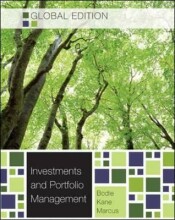Introduction to risk, return and the historical record
3 important questions on Introduction to risk, return and the historical record
What is the degree of freedom bias and how can it be eliminated?
What is the sharpe ratio?
What is value at risk?
The question on the page originate from the summary of the following study material:
- A unique study and practice tool
- Never study anything twice again
- Get the grades you hope for
- 100% sure, 100% understanding





























